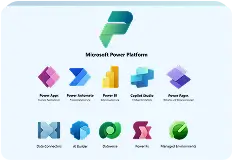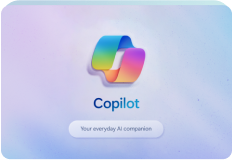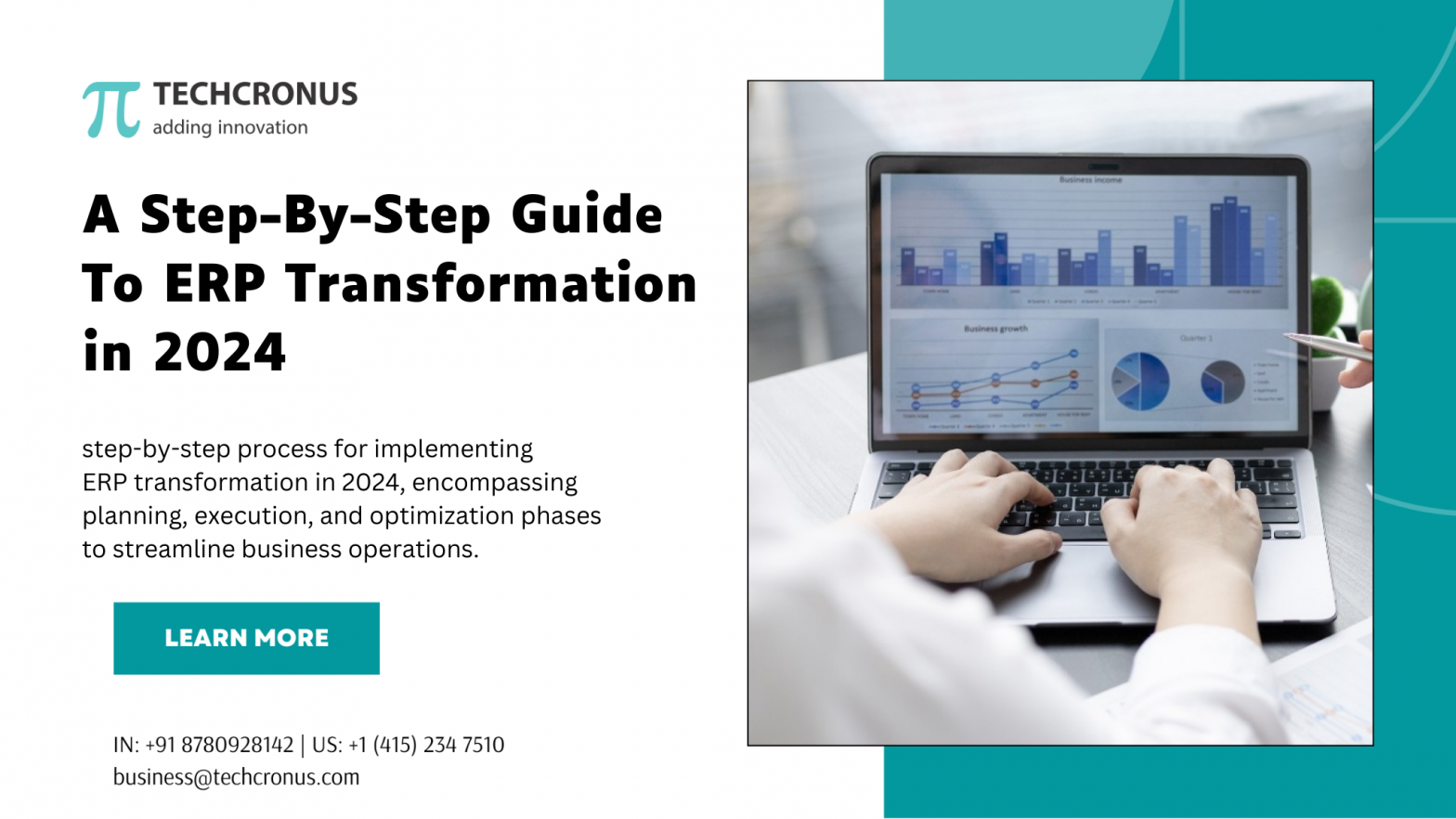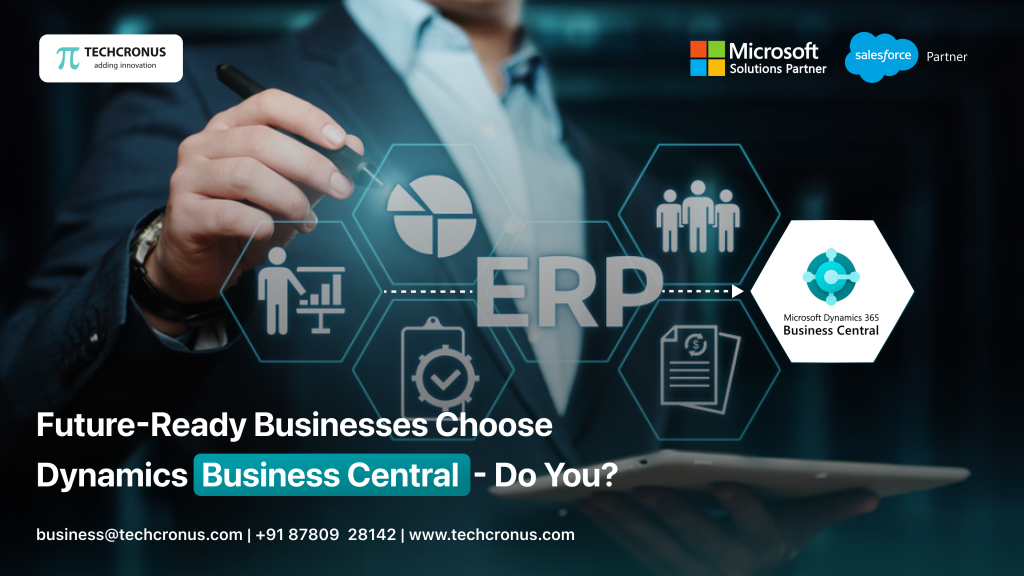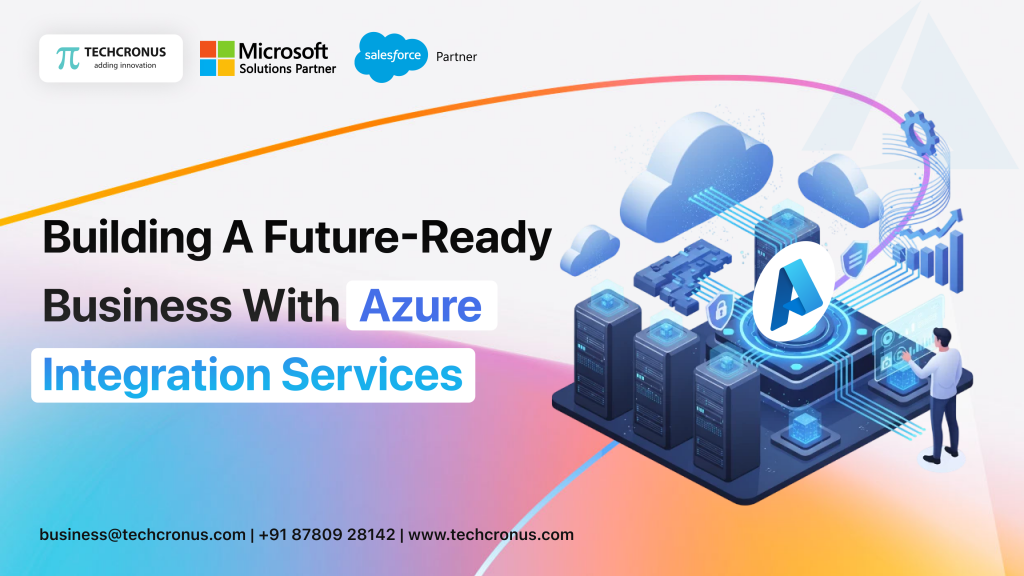Table of Contents
Introduction
In the contemporary digital landscape, organizations continually seek avenues to enhance efficiency, optimize operations, and maintain competitiveness. A proven and impactful strategy in this regard is Enterprise Resource Planning ERP transformation.
Enter the ERP Transformation Hub, your comprehensive resource for understanding the nuances of ERP transformation. This hub offers a holistic view of what ERP transformation entails, its significance, and a roadmap to successfully navigate the process.
Whether you’re initiating your ERP Systems for Small Businesses journey or possess seasoned expertise, this hub is designed to provide invaluable insights and pragmatic advice such as enhanced efficiency, cost savings, and scalability, ensuring a seamless and effective ERP transformation experience.
The Evolution of ERP Systems
- The evolution of ERP (Enterprise Resource Planning) systems can be traced back to the 1960s and 1970s when businesses started adopting Material Requirements Planning (MRP) systems to manage inventory and production processes. These early systems were primarily focused on automating and optimizing manufacturing processes, helping organizations plan and track their material needs. Over time, MRP systems evolved into MRP II (Manufacturing Resource Planning), incorporating additional functionalities like capacity planning, financials, and human resources.
- In the 1990s, the term “Enterprise Resource Planning” emerged, signifying a broader scope that extended beyond manufacturing to include various business functions. ERP systems have become more comprehensive, integrating multiple departments and functions within an organization. This integration allowed for better collaboration, streamlined workflows, and improved data visibility.
- The early 2000s witnessed a shift towards more user-friendly interfaces and the adoption of client-server architectures. ERP systems expanded their reach to cover areas such as supply chain management, customer relationship management, and business intelligence. This period also marked the rise of large ERP vendors like SAP, Oracle, and Microsoft, offering robust solutions for diverse industries.
- In recent years, there has been a significant transformation in ERP systems with a notable shift towards cloud-based solutions. Cloud-based ERP systems provide several advantages, including scalability, accessibility, and cost-effectiveness. Organizations can access their ERP systems from anywhere with an internet connection, facilitating remote work and global collaboration. The cloud also enables easier updates and maintenance, ensuring that organizations always have access to the latest features and security patches.
- The move to the cloud aligns with the broader trend of digital transformation, where businesses leverage technology to enhance agility, innovation, and competitiveness. Cloud-based ERP solutions have become increasingly popular due to their flexibility and the ability to adapt to changing business needs rapidly.
- Overall, the evolution of ERP systems reflects the dynamic nature of business processes and the continuous quest for more integrated and efficient solutions. The shift towards cloud-based ERP systems is a testament to the ongoing drive for flexibility and responsiveness in the modern business landscape.
Why Businesses Undertake ERP Transformation
Businesses undertake ERP (Enterprise Resource Planning) transformations for various compelling reasons, all aimed at enhancing overall efficiency, achieving better data integration, and staying competitive in today’s dynamic landscape.
Operational Efficiency Improvement:
- ERP transformations are often driven by the desire to streamline and optimize business processes. The LeanIX and Techcronus articles may elaborate on how businesses use tools and methodologies to identify inefficiencies and bottlenecks in their operations.
- Implementing ERP systems allows for the automation of routine tasks, reducing manual errors and increasing the speed of various processes. This aligns with the principles of Lean management, as discussed in LeanIX.
Better Data Integration and Visibility:
- ERP systems facilitate improved data integration by centralizing information from various departments into a single platform. This enables real-time access to critical data, fostering better decision-making. Techcronus might discuss how integrated data flows contribute to a more holistic view of business operations.
- Enhanced data visibility allows businesses to respond more effectively to market changes and customer demands. This aligns with the idea of data-driven decision-making, a key theme in modern business strategies discussed in Techcronus.
Competitive Advantage:
- Staying competitive is a significant driver for ERP transformations. The techcronus article may highlight how businesses need to adopt advanced technologies to keep pace with industry trends.
- ERP systems enable organizations to adapt quickly to market shifts, regulatory changes, and evolving customer expectations. This agility is a crucial factor in gaining a competitive edge, as discussed in the LeanIX and Techcronus articles.
Digital Transformation Initiatives:
- ERP transformations are often integral to broader digital transformation initiatives. The articles may discuss how businesses are leveraging technology to innovate and remain relevant in the digital age.
- The integration of advanced technologies, such as AI and machine learning, within ERP systems is likely to be highlighted in the articles as a means of future-proofing businesses.
Scalability and Flexibility:
- The ability to scale operations and adapt to changing business requirements is a common theme in ERP transformations. Businesses may seek solutions that can grow with them, and the Techcronus article may touch on the importance of flexible systems.
The 7-Step Guide to ERP Transformation
Step 1: Assessment and Planning
Initiate the ERP transformation journey with a thorough assessment of your current systems, processes, and organizational needs. Identify pain points, bottlenecks, and areas for improvement. Create a detailed roadmap outlining the transformation process. For example, leverage tools like process mining to analyze existing workflows and identify inefficiencies. A real-world example could be a manufacturing company using process mining to discover that order processing delays are occurring due to manual data entry errors.
Step 2: Stakeholder Engagement
Engage key stakeholders early and consistently throughout the ERP transformation. Communicate the goals, benefits, and potential challenges of the transformation. Ensure that the concerns and insights of different departments are considered. In practice, this could involve conducting regular workshops with department heads to gather feedback and address concerns. For instance, in a retail setting, involving store managers in the planning phase can lead to better alignment of the ERP system with store-level operational needs.
Step 3: Customization and Configuration
Tailor the ERP solution to meet the specific needs of your organization. This involves customization and configuration to ensure seamless integration with existing systems. Provide training to employees to familiarize them with the new processes. In a real-world scenario, a financial services company might customize the ERP system to accommodate industry-specific compliance requirements.
Step 4: Data Migration
Execute a well-thought-out data migration plan to ensure a smooth transition from old to new systems. Cleanse and validate data to maintain accuracy. Establish data migration protocols to minimize the risk of data loss or corruption. An example could be a healthcare organization migrating patient records to a new ERP system, ensuring data integrity and compliance with privacy regulations.
Step 5: Testing and Quality Assurance
Conduct comprehensive testing to identify and address any issues before the ERP system goes live. Implement a phased testing approach, involving end-users in user acceptance testing (UAT). Real-world advice includes simulating real-world scenarios, such as a manufacturing company testing the ERP system’s ability to handle varying production demands and supply chain fluctuations.
Step 6: Deployment and Training
Execute the deployment plan, ensuring minimal disruption to operations. Provide extensive training to end-users to facilitate a smooth transition. Consider utilizing a train-the-trainer model for widespread knowledge dissemination. In a service-oriented business, like consulting, deployment might involve rolling out the ERP system in phases, with targeted training sessions for consultants to adapt to new project management modules.
Step 7: Monitoring and Optimization
After deployment, continuously monitor the ERP system’s performance and gather user feedback. Implement continuous improvement strategies based on insights gained from monitoring. A concrete example could be an e-commerce company using analytics tools to monitor customer interactions and promptly optimizing the ERP system to enhance the online shopping experience.
Challenges in ERP Transformation
Common Challenges in ERP Transformation:
1. Data Migration Complexities:
- Challenge: Data migration can be complex and prone to errors, leading to issues with data accuracy and integrity in the new ERP system.
- Solution: The techcronus resources may suggest conducting thorough data assessments before migration. Implement data cleansing and validation processes, and consider a phased migration approach to minimise disruptions.
2. User Adoption Issues:
- Challenge: Employees may resist or struggle to adapt to new ERP systems, leading to productivity losses and inefficiencies.
- Solution: Techcronusmight recommend comprehensive training programs, including user-friendly documentation and tutorials. Incentivize and involve employees in the transformation process, and establish a feedback loop to address concerns and improve user experience.
3. Integration Challenges:
- Challenge: Integrating the new ERP system with existing applications and technologies can be challenging, resulting in data silos and reduced overall system effectiveness.
- Solution: Techcronus could suggest a robust integration strategy, emphasizing API compatibility and ensuring that the ERP system aligns with existing IT architecture. Utilize middleware solutions for smoother integration, and conduct thorough testing to identify and resolve integration issues.
4. Budget Overruns:
- Challenge: ERP transformations often face budgetary challenges due to unforeseen costs, such as customization requirements or extended timelines.
- Solution: LeanIX may recommend meticulous budget planning, including contingency funds for unexpected expenses. Regularly review and adjust the budget as needed, and ensure clear communication with stakeholders about potential cost implications.
5. Inadequate Change Management:
- Challenge: Poor change management can lead to resistance, confusion, and a lack of alignment with organizational goals.
- Solution: Resources like techcronus might stress the importance of robust change management strategies. Develop clear communication plans, involve key stakeholders early, and provide ongoing support to employees during the transition. Regularly assess and adjust change management plans based on feedback.
6. Lack of Executive Support:
- Challenge: Without strong support from leadership, ERP transformations may face difficulties in obtaining necessary resources and driving organizational commitment.
- Solution: techcronus may highlight the need for visible and active support from top executives. Engage leadership in the planning process, communicate the strategic benefits of ERP transformation, and ensure executives are champions of the initiative.
Best Practices to Overcome Challenges:
1. Comprehensive Planning:
- Develop a detailed and realistic project plan, considering all aspects of the ERP transformation. Regularly revisit and adjust the plan as needed.
2. Engage Stakeholders:
- Involve key stakeholders from various departments in the planning and decision-making processes. Foster a sense of ownership and collaboration.
3. Prioritize Change Management:
- Implement a robust change management strategy, including communication plans, training programs, and ongoing support mechanisms for employees.
4. Thorough Testing:
- Conduct extensive testing at each stage of the ERP transformation to identify and address issues before full implementation.
5. Continuous Monitoring and Improvement:
- Establish mechanisms for continuous monitoring of the ERP system’s performance and user feedback. Use insights gained to make continuous improvements.
Top ERP Solutions for Product-Centric Enterprises
1. SAP S/4HANA for an enterprise-grade solution
SAP S/4HANA is a next-generation ERP system built for large enterprises to manage finance, supply chain, manufacturing, and more. It provides real-time analytics, automation, and scalability for complex business operations.
2. Microsoft Dynamics 365 Business Central
A comprehensive ERP solution designed for small to mid-sized businesses to manage finance, operations, sales, and service. Streamline workflows, boost productivity, and gain real-time business insights with Business Central.
3. Microsoft Dynamics 365 Finance & Supply Chain Management
Optimize financial operations and streamline your supply chain with an intelligent, cloud-based ERP solution. Gain global visibility, automate workflows, and drive strategic decisions with real-time analytics.
4. Acumatica Cloud ERP for the best user experience
Acumatica offers a modern, intuitive cloud ERP platform designed for growing businesses. Enjoy a seamless user experience with anytime, anywhere access and real-time data visibility.
5. Oracle NetSuite ERP
Oracle NetSuite is a unified cloud ERP solution that helps businesses manage finance, inventory, CRM, and eCommerce. Streamline operations, improve efficiency, and scale with ease using real-time insights.
6. Sage Intacct for finance and accounting
Sage Intacct is a powerful cloud-based financial management solution tailored for growing businesses. It delivers real-time financial insights, automates core accounting tasks, and ensures compliance with ease.
The Role of Modern Technologies in ERP Transformation
Impact of Emerging Technologies on ERP Systems:
1. Artificial Intelligence (AI):
- AI plays a pivotal role in enhancing ERP capabilities. Machine learning algorithms within ERP systems can analyze large datasets, offering insights into historical trends and predicting future patterns. This assists businesses in making more informed decisions.
- AI enables intelligent automation, streamlining repetitive tasks and improving overall efficiency. For instance, in ERP systems, AI can automate data entry, flag anomalies, and optimize workflows.
2. Internet of Things (IoT):
- IoT connects physical devices to the internet, allowing ERP systems to gather real-time data from various sources. In manufacturing, for example, IoT sensors on production equipment can transmit data to the ERP system, providing insights into equipment health and production efficiency.
- Improved visibility into supply chains, enhanced monitoring of assets, and predictive maintenance are among the benefits of integrating IoT with ERP systems.
3. Blockchain:
- Blockchain technology enhances the transparency and security of transactions within ERP systems. It creates a decentralized and tamper-resistant ledger, reducing the risk of fraud and ensuring the integrity of data.
- In supply chain management within ERP, blockchain can be utilized to trace the origin of products, verify authenticity, and enhance the overall transparency of the supply chain.
Shaping Future ERP Solutions:
1. Advanced Analytics and Predictive Insights:
The integration of AI into ERP systems enables advanced analytics and predictive insights. Businesses can leverage these capabilities to forecast demand, optimize inventory levels, and make strategic decisions based on data-driven predictions.
2. Real-Time Data and Decision-Making:
IoT contributes to the real-time data influx into ERP systems. This allows organizations to make more agile and informed decisions based on the latest information from various sources, such as manufacturing processes, supply chains, and customer interactions.
3. Enhanced Security and Traceability:
Blockchain technology enhances the security of transactions and data within ERP systems. This is particularly crucial in sectors where data integrity and traceability are paramount, such as pharmaceuticals or high-value goods.
4. Improved Automation and Efficiency:
The combination of AI, IoT, and blockchain leads to improved automation of processes within ERP systems. Repetitive tasks can be automated, reducing manual errors and enhancing overall efficiency across different business functions.
5. Adaptability to Industry-Specific Needs:
Future ERP solutions are likely to become more adaptable to industry-specific requirements through the integration of emerging technologies. This adaptability ensures that ERP systems can cater to the unique challenges and processes of diverse sectors.
Best Practices for a Successful ERP Transformation
best practices for a successful ERP transformation, drawing upon general industry knowledge as of my last update in January 2024:
1. Thorough Needs Assessment:
Begin with a comprehensive assessment of current systems, processes, and organizational needs. Understand pain points and identify areas for improvement.
2. Engage Stakeholders:
Involve key stakeholders from different departments early in the process. This not only garners support but also provides valuable insights. techcronus may emphasize the importance of aligning ERP transformation with organizational goals through stakeholder engagement.
3. Clear Communication:
Maintain clear and transparent communication throughout the ERP transformation. Regularly update stakeholders on progress, changes, and expected outcomes. Effective communication aligns with the Change Management practices suggested by techcronus.
4. Vendor Selection:
Choose a vendor that aligns with your organization’s size, industry, and specific needs. LeanIX may stress the importance of evaluating vendors based on their ability to scale and adapt to your evolving requirements.
5. Employee Training and Involvement:
Develop a comprehensive training program for employees to ensure they are proficient in using the new ERP system. Involve employees in the transformation process, making them feel invested. Techcronus might provide insights into creating user-friendly documentation and tutorials for effective training.
6. Incremental Implementation:
Consider a phased or incremental implementation approach to minimize disruptions and allow for adjustments based on feedback.
7. Data Migration Strategy:
Devise a well-thought-out data migration plan. Cleanse and validate data to maintain accuracy.
8. Change Management:
Implement a robust change management strategy. Address employee concerns, incentivize adoption, and create a feedback loop to continuously improve the user experience.
9. Comprehensive Testing:
Conduct thorough testing at each stage of the ERP transformation to identify and address issues before full implementation.
10. Executive Support:
Secure visible and active support from top executives. Engage leadership in the planning process, communicate the strategic benefits of ERP transformation, and ensure executives are champions of the initiative. This aligns with the principles of LeanIX.
11. Budget Planning and Review:
Meticulously plan the budget, including contingency funds for unexpected expenses. Regularly review and adjust the budget as needed. LeanIX might recommend a thorough budget planning process.
12. Post-Implementation Monitoring:
Establish mechanisms for continuous monitoring of the ERP system’s performance and user feedback. Use insights gained to make continuous improvements. This aligns with the principles of techcronus, emphasizing continuous improvement.
Conclusion
ERP transformation is a complex yet indispensable process for organizations seeking to thrive in the dynamic landscape of today’s business environment. Key takeaways emphasize the need for a strategic and meticulous approach to ensure the successful implementation of ERP systems. Firstly, a thorough needs assessment is critical to understanding current challenges, allowing businesses to tailor the transformation to their specific requirements. Engaging stakeholders early in the process fosters a sense of ownership and ensures that the ERP system aligns seamlessly with organizational goals. Clear communication at every stage is imperative, promoting transparency and mitigating resistance to change.
Vendor selection plays a pivotal role, requiring careful consideration of a vendor’s ability to scale and adapt to evolving organizational needs. Employee training is equally crucial, and involving employees in the transformation process enhances their commitment to the change. Incremental implementation and a well-thought-out data migration strategy contribute to a smoother transition. Change management practices, supported by visible executive leadership, help address challenges associated with employee adoption. Continuous monitoring post-implementation ensures ongoing improvements and the optimization of ERP system performance. Overall, the success of ERP transformation hinges on a comprehensive and strategic approach that aligns technology with business objectives, fostering agility, efficiency, and sustained growth in the ever-evolving business landscape.
FAQs
1. What is an ERP Transformation?
An ERP transformation is a strategic process where an organization overhauls and optimizes its existing Enterprise Resource Planning (ERP) system. This involves adopting advanced technologies, reevaluating business processes, and often integrating cloud-based solutions to improve overall efficiency and productivity.
2. Why is ERP Transformation Important?
ERP transformation is crucial for organizations to adapt to the evolving business landscape. It enhances efficiency, streamlines operations, and ensures competitiveness. By aligning ERP systems with current business needs, organizations can make data-driven decisions, improve collaboration, and stay agile in a dynamic environment.
3. Key Steps in an ERP Transformation Process:
The key steps in an ERP transformation process typically include assessment and planning, stakeholder engagement, customization and configuration, data migration, testing and quality assurance, deployment and training, and ongoing monitoring and optimization.
4. Common Challenges in ERP Transformation and Solutions:
Challenges include data migration complexities, user adoption issues, integration challenges, budget overruns, and inadequate change management. Solutions involve thorough planning, stakeholder engagement, robust change management, and continuous monitoring for improvements.
5. Popular ERP Systems Used in ERP Transformation:
Some popular ERP systems used in ERP transformations include SAP, Oracle ERP Cloud, Microsoft Dynamics 365, and Infor CloudSuite. The choice often depends on the organization’s specific industry, size, and requirements




